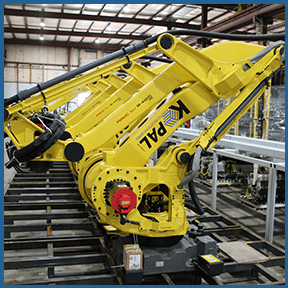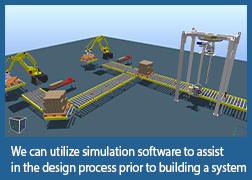What to Automate First? Expert Tips for Growing Manufacturers

Start Your Automation Journey with Confidence
Start Smart with Automation
For growing manufacturers, automation isn’t just about keeping pace—it’s about staying ahead. But deciding where to begin can feel overwhelming. Start in the wrong place, and you risk added costs, wasted time, and minimal results. Start in the right place, and you unlock faster ROI, improved efficiency, and a scalable foundation for future projects.
At Kaufman Engineered Systems, we’ve spent decades guiding manufacturers across industries through this critical first step. Our experts combine real-world experience, advanced simulation tools, and proven strategies to ensure you begin your automation journey with confidence.
Request a Quote ---- Contact Us ---- JOIN OUR MAILING LIST
Three Steps to Successful Automation

Repetitive manual labor can lead to errors and/or injury.
1. Identify Your Pain Points
Before investing in automation, pinpoint where your operation is experiencing the most pressure. Typical indicators include:
- Labor shortages or high turnover in repetitive, physically demanding tasks.
- Production bottlenecks where manual processes can’t keep up with demand.
- Inconsistent quality or rework issues that drive up costs and waste.
- Safety risks where employees are exposed to repetitive strain or hazardous conditions.
Focusing on the most urgent challenges ensures your first automation investment delivers visible improvements quickly.

Increase throughput and prevent errors with automation systems.
2. Prioritizing High-Impact, Repeatable Tasks
Not every process is a good fit for automation at the start. Look for areas with:
- High volume and consistency—processes like palletizing, case handling, or stretch wrapping.
- Clear, measurable ROI—where reducing manual labor or downtime directly boosts throughput.
- Integration potential—tasks that connect easily with upstream or downstream processes.
For many manufacturers, palletizing and end-of-line packaging are ideal starting points. These functions are repetitive, labor-intensive, and critical to overall production flow.

3. Think Beyond the First Project
Successful automation is about scalability. While your first step should deliver immediate wins, it should also fit into a long-term automation strategy. Consider:
- Modularity and flexibility—systems that can adapt as product lines or volumes grow.
- Future connectivity—how this project can integrate with future robotics, conveyors, or software upgrades.
- ROI over time—not just labor savings today, but operational resilience for tomorrow.
By planning ahead, your automation investment becomes a platform for growth, not a one-off solution.
Kaufman's Expertise: Your Partner in Getting Started

Choosing where to automate first is critical—and it’s not a decision you should make alone. Kaufman Engineered Systems provides:
- Expert consultation and simulation tools like Emulate3D and RoboGuide to model your options before investing.
- Decades of industry experience in food, beverage, paper, health & beauty, and custom manufacturing.
- End-to-end solutions—from design and build to installation, training, and ongoing support.
Our mission is to help you not only start strong but also build a roadmap for continuous improvement and competitive advantage.
If you're wondering where to begin, Kaufman Engineered Systems is ready to help you identify the highest-value opportunities and design a solution tailored to your operation. With our proven expertise, you can take the first step in your automation journey—and know it’s the right one
Request a Quote ---- Contact Us ---- JOIN OUR MAILING LIST
